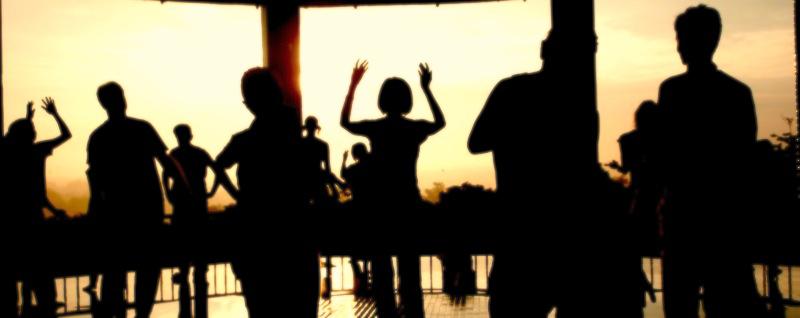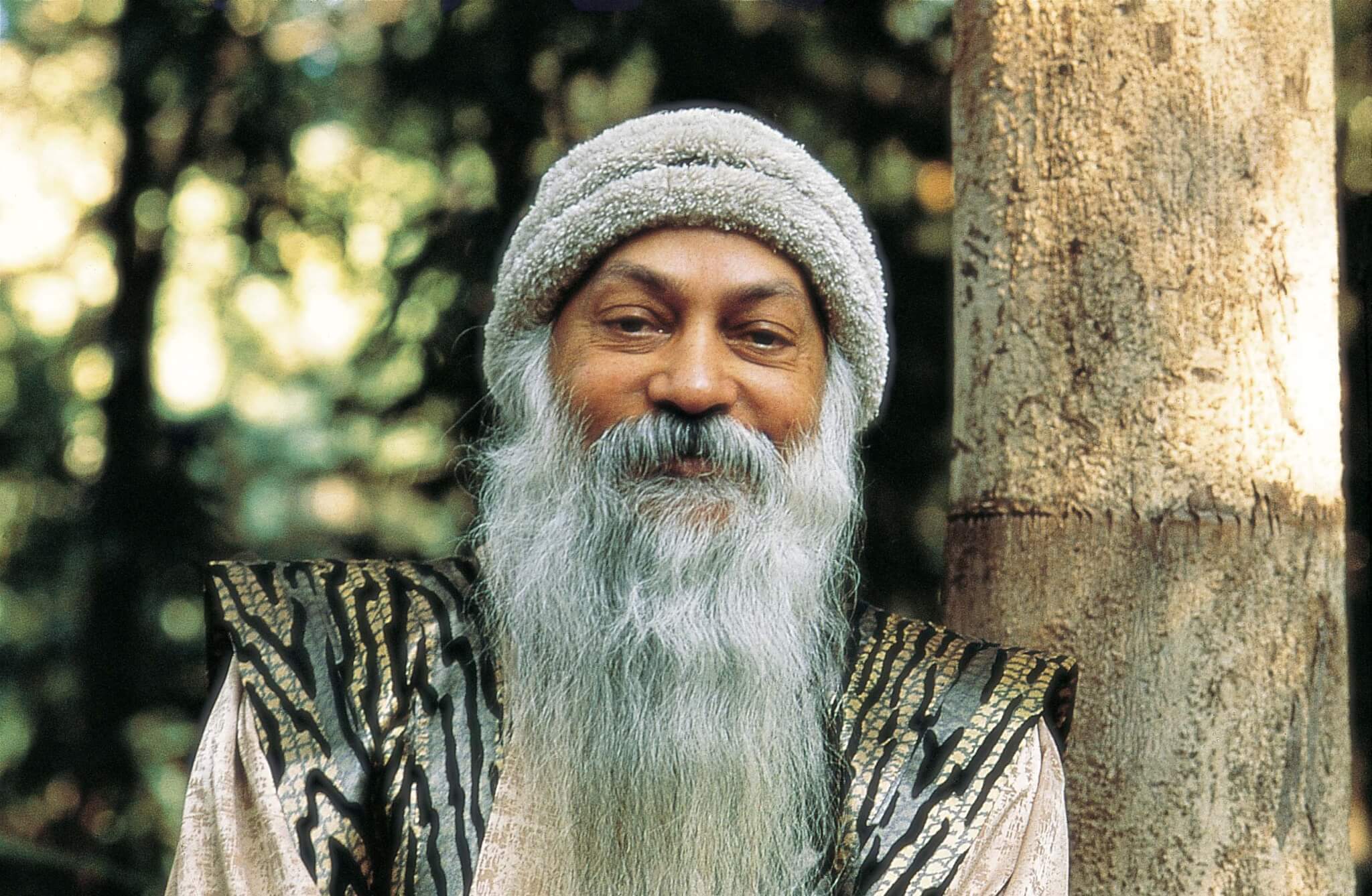Active Meditation
The technique known as Active Meditation refers to a style of meditation that was developed by the spiritual teacher, Osho, in the 1970’s. Also called Dynamic Meditation, it differs from most other forms of meditation in that the body is engaged dynamically throughout the session. Consisting of five stages, it allows the practitioner to tap into his own “healing energy” and repair old wounds which may have been present since early childhood. This hyper-physical modality of meditation uses “chaotic” movements to force the heart (aka body) to take over and suppress the power of thought (aka brain) in order to allow the heart to express itself fully and naturally without suppression from the brain. The goal of active meditation is “catharsis”, defined by Osho as the “unburdening of the heart”, and is necessary for most people due to the tendency of the brain to control the heart. He believed that while ancient forms of meditation were not irrelevant or obsolete, mankind had changed, requiring new techniques and modes of “pushing consciousness downward from the brain” in order for us to achieve higher levels of consciousness.


Osho —The Man Behind the Dynamic Meditation Movement
Osho, born Bhagwan Shree Rajneesh in India in 1931, said he reached the stage of enlightenment at the age of 21, and while holding down a day job as a professor of philosophy at the University of Jabalpur, began his journey as a spiritual teacher. He traveled extensively throughout India spreading his philosophy, some of which was quite controversial. One of his most unconventional theories was that sex was a necessary first step toward achieving the state of “super-consciousness” or “no mind”.
In the mid-1960’s, the soon-to-be guru decided to leave his professorial post and focus on his role as a spiritual teacher, eventually creating an ashram in Pune, India where his followers could live and learn his spiritual teachings. His ideas were not without critics, however, and he faced significant opposition from the local government as well as traditional religious Hindus. They claimed his spiritual teachings promoted sexual promiscuity as well as violence, and facetiously nicknamed him, “The Sex Guru”. Despite this, Osho soon had thousands of enlightenment-seeking disciples traveling to his ashram from all over the West, resulting in overcrowding and more pushback from the government. An assassination attempt contributed to his decision to relocate, and he and his 2,000 followers soon made a home on a large ranch in Oregon. The commune, built on a 100-square-mile property, aimed to develop its own city, called “Rajneeshpuram”. As the “city” grew, so did opposition to its presence, resulting in frequent battles between nearby residents and the spiritual teacher and his disciples. He eventually fled to India.
Practice of Active Meditation
The practice of Active Meditation consists of five stages: Chaotic Breathing, Explode!, Hoo Mantra, Freeze and Celebrate. It is imperative that the stages be performed in the correct order to achieve the desired effect of catharsis. Below is a brief description of each of the five stages of Dynamic Meditation:
First Stage: Chaotic Breathing (10 minutes)
In the Chaotic Breathing stage, the inhalations should be deep and irregular, with no particular rhythm, and must be done hard and fast. The goal of this stage is to increase carbon dioxide and reduce oxygen levels, resulting in a state of “dreaminess” and increased energy. While it is okay to move the body in such a way that increased intake of oxygen is facilitated, it is important not to expel the energy that you are creating during this stage. The full ten minutes of chaotic breathing must be completed, as the energy created during this stage will be vital in performing the next four stages.
Second Stage: Explode! (10 minutes)
In this stage, we “explode” and allow our body to express whatever it is feeling without any input from the brain. Many practitioners scream and yell, throw themselves on the floor, kick and pound their fists, or cry during the Explode! stage. The goal is to give in to the body freely, without censorship, and to continue these vigorous movements for ten minutes without slowing or stopping. Allowing the body to “take over” creates the necessary separation of consciousness from the physical being and allows us to become truly free from our bodies.
Third Stage: Hoo Mantra (10 minutes)
During this third stage of Dynamic Meditation, the arms must be raised straight up toward the sky and, while jumping up and down, the mantra “Hoo” is recited each time the feet connect fully with the floor. The goal of the recitation of the word Hoo and the simultaneous reconnection of the feet with the floor is to connect with the sex center, “hammering” into it with each landing. According to Osho, the word Hoo was chosen because of its ability to create fire within the reciter resulting in the burning (and eventual dissipation) of old consciousness and making way for a new man to be born. Derived from the Sufi tradition, the word Hoo comes from the mantra, “Allah Hoo”, meaning “God is present”.
Fourth Stage: Freeze (15 minutes)
In the Freeze stage, the practitioner stops all movement and “freezes” in whatever position they are in when this stage begins. While it may seem difficult, it is recommended that you suppress any instinct to move any part of your body, even if you feel you might need to cough or scratch an itch. Any movement will result in a dissipation of the energy you have been building up for the past 30 minutes and reduce the benefits of Dynamic Meditation. Rather than expelling energy, which was accomplished during the first three stages, in the fourth stage, you begin the true meditation. While in this restful and depleted state, your body allows itself to become a “vessel” into which grace may enter and is filled with a new and replenished spirit. The exhausting efforts that have led up to this stage result in the mind clearing itself completely, resulting in a state of pure consciousness and devoid of ego—a state of pure meditation, or “Dhyana”.
Fifth Stage: Celebrate! (15 minutes)
This final stage of Dynamic Meditation is a joyful one and requires that the now-replenished spirit of the practitioner be celebrated through dancing and singing in a purely blissful state. It is important not to be conscious of the sounds of your singing voice or the movements of your body, and that you allow your body to have complete control. Allow only the body to determine what the dance will be, and remove your mind from the process completely. Giving your life energy the freedom to move freely within you will result in a connection with the divine and a separation from the physical. The energy should be playful and liberated and the residual feeling of youth, freshness, and newness will stay with you long after your Dynamic Meditation session has ended.
Although Osho died of heart failure in 1990, the spiritual teacher’s legacy lives on throughout the world as the founder of Active Meditation. The Osho International Meditation Resort in Pune, India, which by some estimates, welcomes over 200,000 visitors each year, allows disciples and the curious alike to explore Dynamic Meditation at what is essentially its birthplace, as well as partake in other modes of meditation and spiritual pursuits. It is considered one of the top nine Yoga centers in India.
You don’t have to travel to India in order to partake in Active Meditation, however, as there are now locations throughout the world where this modality is taught and practiced. While many describe their initial experiences with Dynamic Meditation as “exhausting”, repeated practice is recommended and likely necessary to learn how to give yourself fully to the meditation and achieve the desired results. Many find it difficult to embrace or even tolerate the physical fatigue they experience during the first three stages of Active Meditation, and therefore do not reach the blissful, re-energized state that will be achieved in Stage Five (if the meditation is done correctly). If each step is completed as instructed, and the practitioner allows himself to be fully immersed in the process, a successful Active Meditation session will occur and the resulting benefits will be bestowed upon him. For many beginners, while not required, it can be helpful to participate in a guided class wherein an instructor leads the participants through each stage, offering helpful commentary when necessary and ensuring the correct timing for each stage is adhered to. Numerous sample sessions of Dynamic Meditation can also be found on sites such as YouTube and can be used as an introduction to the practice if classes are not offered near you.
Although Osho has been quoted as saying that this type of meditation was fundamental for today’s society, it is only one of many ways in which we can connect with our consciousness. Practitioners of Zen meditation, transcendental meditation, and Kundalini Yoga, among others, would likely advocate for a broader acceptance of what is considered beneficial in the pursuit of spiritual connectedness, and most would agree that a multi-pronged approach probably expands one’s chances of finding true inner peace.
© 2017 5th Dimensional Quantum Healing & Awareness by Author: Roisin Herrera
